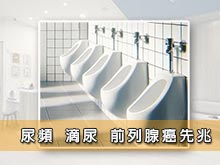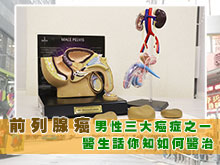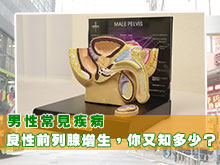[ 會員#24702 ] Dream
 膀胱石治療方法
膀胱石治療方法
病患者男 - 56歲
Dear Dr Andrew Yip,
Your are a great, kind and caring doctor. Thank you so much for your reply. I have a bladder stone 3.1 cm * 1.7 cm * 2.1 cm. There is a research about treatment options for treating bladder stone.
Vesical calculus is a common problem that is treated traditionally with open cystolithotomy or cystolithalopaxy. Open surgery has the inherent problems of a long scar, prolonged catheterization, extended hospitalization, and risk of infection. Transurethral cystolithalopaxy also requires special instruments that carry a risk of trauma, which could lead to urethral strictures. Thirty-eight patients (15 children and 23 adults) were treated for vesical calculi by percutaneous cystolithotomy (PCCL), a minimally invasive procedure. A fluoroscopic-guided tract was made to the bladder through a small suprapubic puncture (9-10 mm) and a nephroscope was inserted via an Amplatz sheath placed suprapubically. The calculus was fragmented with ultrasound or pneumatic energy before being flushed out. A suprapubic catheter was kept in place for 48 hours postsurgery; no urethral catheter was needed. Urethral instrumentation was kept to a minimum. After 48 hours, the suprapubic catheter was clamped and removed after the patient had two or three normal voids. No significant intraoperative or postoperative complication was encountered. Given that the urethra is spared, percutaneous cystolithotomy is a preferred approach in patients with vesical calculi.
https://www.researchgate.net/publication/12923885_Percutaneous_cystolithotomy_for_vesical_calculi_A_better_approach
Dear Dr Andrew Yip,
Your are a great, kind and caring doctor. Thank you so much for your reply. I have a bladder stone 3.1 cm * 1.7 cm * 2.1 cm. There is a research about treatment options for treating bladder stone.
Vesical calculus is a common problem that is treated traditionally with open cystolithotomy or cystolithalopaxy. Open surgery has the inherent problems of a long scar, prolonged catheterization, extended hospitalization, and risk of infection. Transurethral cystolithalopaxy also requires special instruments that carry a risk of trauma, which could lead to urethral strictures. Thirty-eight patients (15 children and 23 adults) were treated for vesical calculi by percutaneous cystolithotomy (PCCL), a minimally invasive procedure. A fluoroscopic-guided tract was made to the bladder through a small suprapubic puncture (9-10 mm) and a nephroscope was inserted via an Amplatz sheath placed suprapubically. The calculus was fragmented with ultrasound or pneumatic energy before being flushed out. A suprapubic catheter was kept in place for 48 hours postsurgery; no urethral catheter was needed. Urethral instrumentation was kept to a minimum. After 48 hours, the suprapubic catheter was clamped and removed after the patient had two or three normal voids. No significant intraoperative or postoperative complication was encountered. Given that the urethra is spared, percutaneous cystolithotomy is a preferred approach in patients with vesical calculi.
https://www.researchgate.net/publication/12923885_Percutaneous_cystolithotomy_for_vesical_calculi_A_better_approach
 葉維晉醫生回覆: [ 11/28/2020 ]
葉維晉醫生回覆: [ 11/28/2020 ]
Taking out bladder stone from the suprapubic route is a known method. This study showed that it is possible and probably a safe method to deal with bladder stone. However, this approach has not been a popular method in dealing with bladder given the fact that it is invasive because it requires a suprapubic puncture. Moreover, the safety of the transurethral route has been proven over many years of worldwide practice. The surgical community would not overnight change its practice because of one published study. I agree that it may turn out to be a good method of dealing with bladder stone but we may need to wait for more published data to prove the same.
Dr Andrew Yip
Dr Andrew Yip
以上資料只供參考,不能作診症用途,
請與家庭醫生查詢並作出適合治療。
如有身體不適請即求診,切勿延誤治療。
若資料有所漏誤,本網及相關資料提供者恕不負責。

請與家庭醫生查詢並作出適合治療。
如有身體不適請即求診,切勿延誤治療。
若資料有所漏誤,本網及相關資料提供者恕不負責。

kwan : 前列腺
病患者男 - 70歲 多謝葉醫生贈覆信,我之前詢問關於做完切除前列腺後己四個多月.但陰莖不能勃起,你告知.......kwan : 前列腺手術
病患者男 - 70歲 請問我在6月7日切除前列腺後到現在己四個月, 身體大至上無問題,但就係陽具不能硬.......thomas Cheung : 下體不適
病患者男 - 28歲 最近兩星期下體出現不適 先由左下腹脹痛 及後會陰左罩丸感覺拉扯,感覺經常想產廁.......Ken : 龜頭炎
上周睇完你開了抗生素同藥膏,現在勃起時龜頭的坑是沒了,但是很乾及還有紅點,是正常嗎,要繼續查膏嗎?.......hh : 不育問題
病患者男 - 18歲 輸精管及睾丸感染,治療期間天天手淫,會否導致輸精管堵塞.......eric : 泌尿外科
病患者男 - 36歲 本人36歲, 之前有召妓習慣(有套), 3個月前已完全停止, 去過2次MHS, 報.......Chun : 尿频
病患者男 醫生好 本人有尿频,每次尿量有时多,有时小 請問做什麼檢察可得知,自己有沒有尿崩証?.......kelvin : 陰莖硬化性淋巴管炎
病患者男 - 26歲 你好,之前睇過幾名醫生都認為係硬化性淋巴管炎,但一年過去,陰莖仍然未消腫,請問點算.......kwan : psa指數
病患者男 - 72歲 請問我4個月前切除咗前列腺及淋巴.現抽血驗psa係0.08 請問有無問題.現尚未.......Ho hang Chu : 精液化驗
病患者男 - 38歲 想請問精液內驗出 normal skin flora 係咩?....... 發出提問使用細則
致葉維晉醫生 提問




 其他葉維晉醫生醫務信箱回覆
其他葉維晉醫生醫務信箱回覆
 即時提問 ?
即時提問 ?





